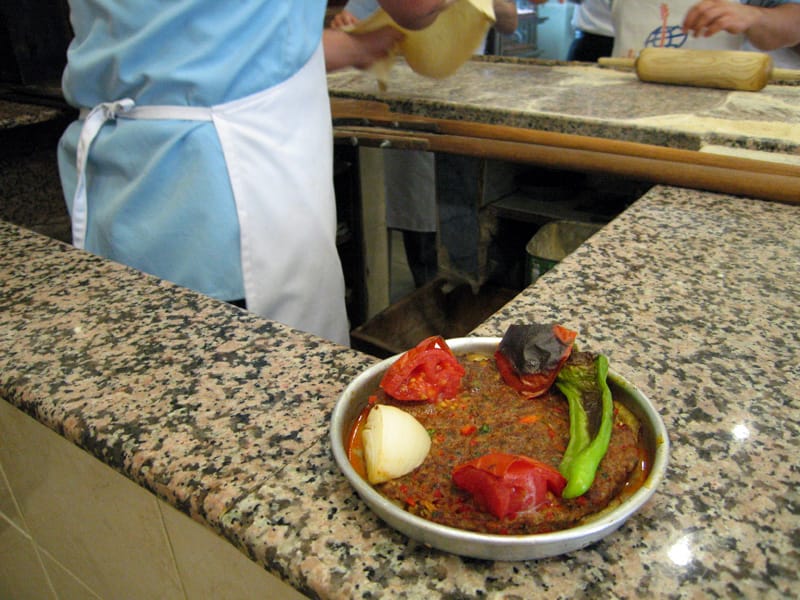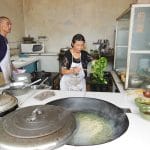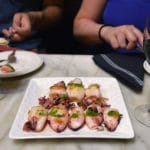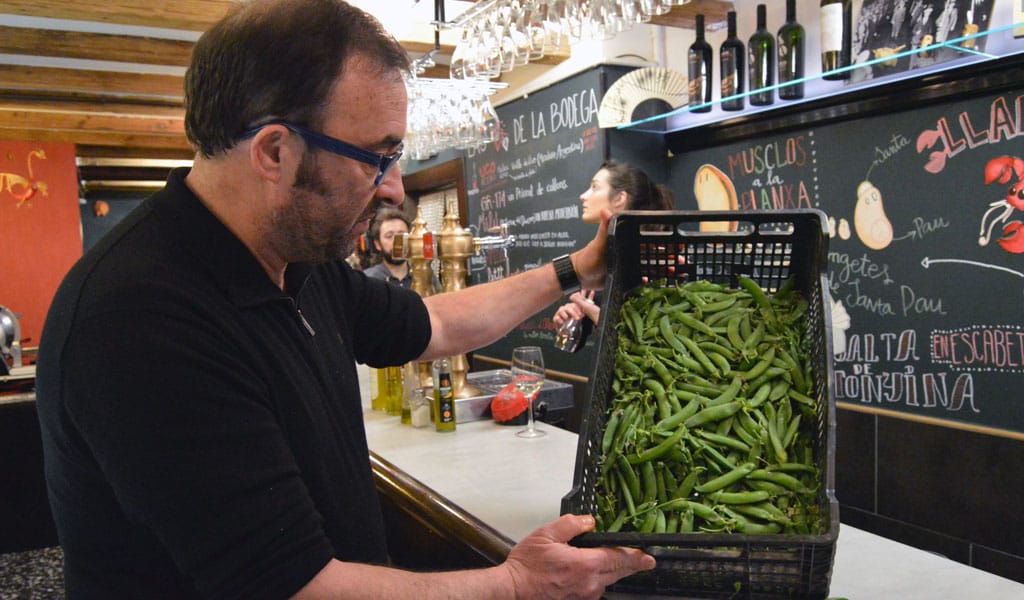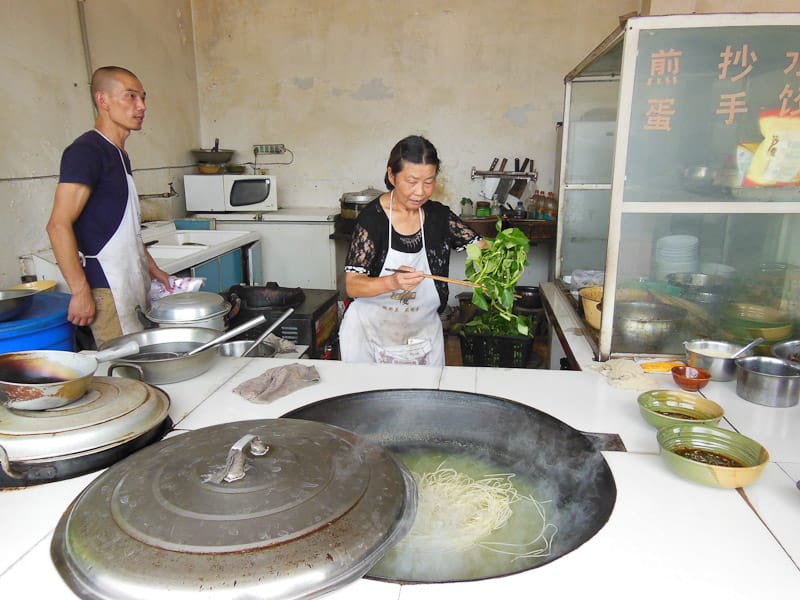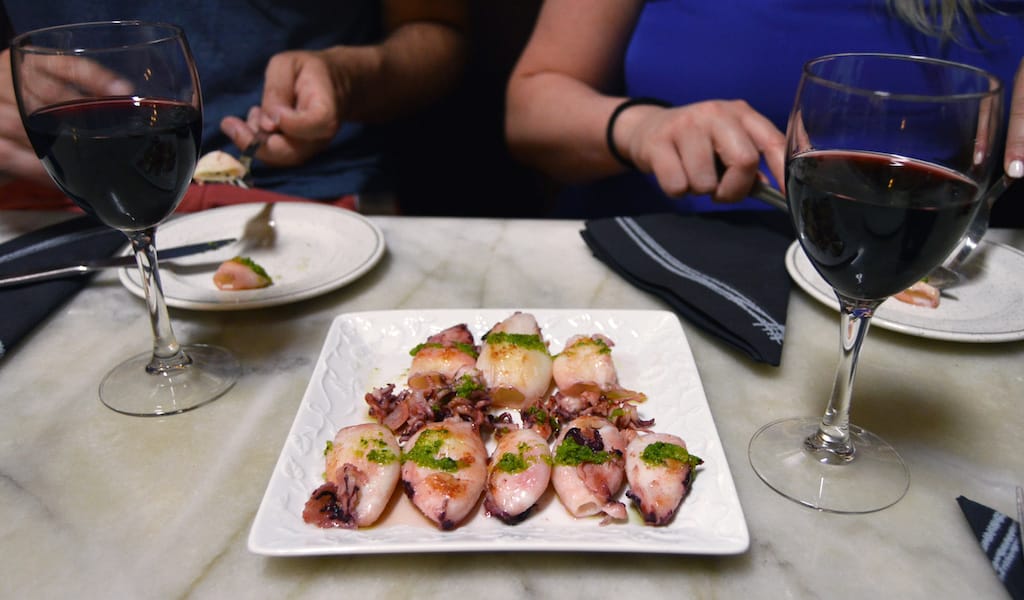In Turkish popular lore, the residents of Kilis, a town in Southeast Turkey near the Syrian border, are known for two things: kebab-making and smuggling. We haven’t been to Kilis, so we can’t vouch for the smuggling bit (although these days the town is featured regularly in the headlines as a hub for fighters being hustled across the border into Syria). But based on the food we’ve tried at Öz Kilis, a wonderful little spot on a quiet backstreet in Fatih run by two Kilis natives, we can report that the kebab-making reputation is well-deserved.
Not just any kebab, mind you. Clearly an unorthodox and clever lot, the people of Kilis have a distinctly different approach to cooking meat. While a wide swath of humanity stretching from the Balkans to the Hindu Kush makes their kebabs by putting meat on a skewer and cooking it over a fire, the people of Kilis are famous for their “pan kebab,” a thin disc of ground meat that is cooked in a shallow metal dish that’s put in the oven. It’s a kind of Turkish meatloaf – only juicier, spicier and, well, better than any other meatloaf we’ve ever had.
Why make kebab in a baking pan, you may ask? We asked the question of Hasan Küçükoğlu, one of Öz Kilis’s owners, who simply answered, “It’s our specialty. It tastes better that way.” Realizing that we were dealing with a native of Kilis, we figured there was something he probably wasn’t telling us. And, indeed, there was. After a bit more prodding, it turned out that the pan kebab is the delicious result of ingenuity fueled by necessity. In Kilis (and other towns along the Turkey-Syria border), one takes one’s circular baking pan to the butcher and buys a few liras worth of meat that the butcher minces and mixes with herbs and spices, puts into the tray, and flattens into a big, thin patty. The next step is to take the pan to the nearest bakery, where the meat is cooked to perfection in the bakery’s large oven. No need to mess around with cooking at home.
At Öz Kilis, the pan kebab is served personal-size, in a tray the size of a dinner plate. Underneath the flavorful, red pepper-infused ground meat lies a layer of thinly sliced eggplants that have turned meltingly soft during the roasting in the restaurant’s brick oven, while on top are chunks of tomato and green pepper that have also been roasted. Served with our pan kebab was a refreshing salad of extremely finely chopped onion, tomato and parsley, livened up with piquant pomegranate molasses. More like gazpacho than a salad, it could be eaten with a soupspoon.
The restaurant also turns out very good lahmacun (flatbread with toppings), another Kilis specialty. As with kebabs, the good people of Kilis take an unorthodox approach to making this classic item, offering something we’ve never seen anywhere else: garlic lahmacun. Where other lahmacun is covered with a reddish minced meat and tomato mix, here it is heavy on the parsley, coming out of the oven a beautiful green and flecked with small chunks of garlic whose flavor has mellowed during the roasting process.
We finished our meal with a glass of exceptionally strong tea, the kind served in Southeast Turkey and known as kaçak çay (“smuggled tea”), usually made from tea brought across the border under the authorities’ nose.
We quietly enjoyed our Kilis tea, this time asking no questions.
Published on July 24, 2012
Related stories
April 21, 2017
BarcelonaBarcelona’s urban sprawl makes it easy to forget that the city is adjacent to two fertile regions to the north and south, El Maresme and El Baix Llobregat, which provide numerous hyperlocal culinary treasures throughout the year. In spring as in other seasons, these treasures appear at markets and restaurants, their origins proudly displayed, sometimes…
October 1, 2013
ShanghaiIt’s been two weeks of cycling through China’s Qinghai province, and the food selection is slim. The majority of the province sits on the vast Tibetan Plateau, well above the tree line in conditions too harsh for significant cultivation. Yaks graze on well-trampled grass as far as the eye can see, with white yurts and…
June 25, 2020
BarcelonaOne communal dish in the middle of the table attracting various fingertips and forks – it’s an image common to numerous countries. From tagine in Morocco to wot in Ethiopia, mezes in the Mediterranean and the Middle East to banchan in Korea, sharing plates is a defining feature of many culinary cultures. In Spain, the quintessential…







































